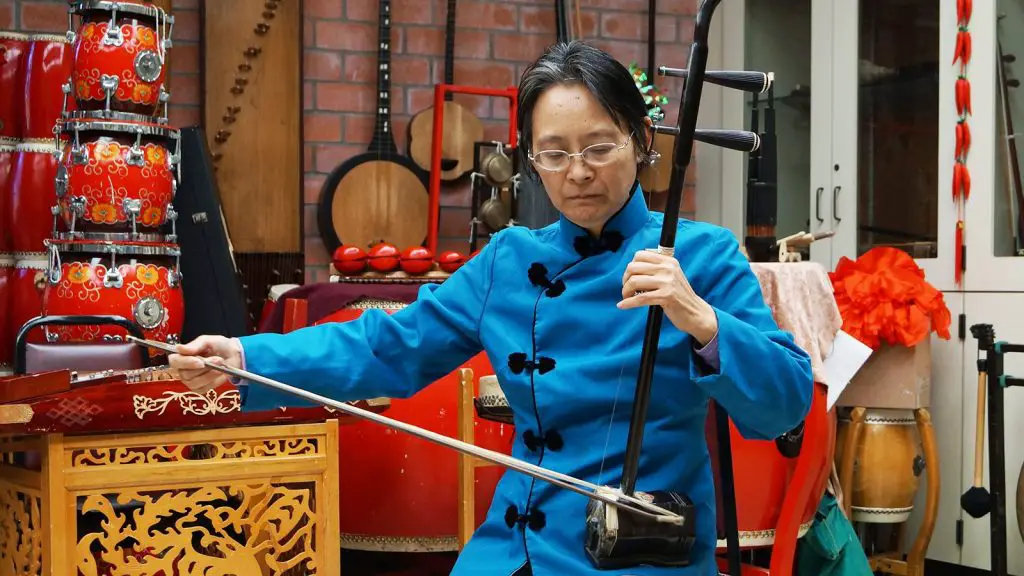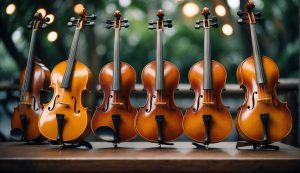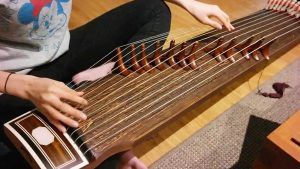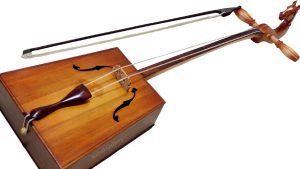Folkstrings.com is reader-supported. When you buy through links on our site, we may earn a small commission.
The erhu, a traditional Chinese stringed instrument, has a history that spans over a thousand years and is a staple in both classical and contemporary Chinese music.
As part of the huqin family, the erhu is often celebrated for its expressive and soulful sound that mimics the human voice.
Playing the erhu involves a combination of skilled finger movements and bowing techniques; the absence of a fretboard means mastering the erhu requires a delicate touch and an ear for pitch.
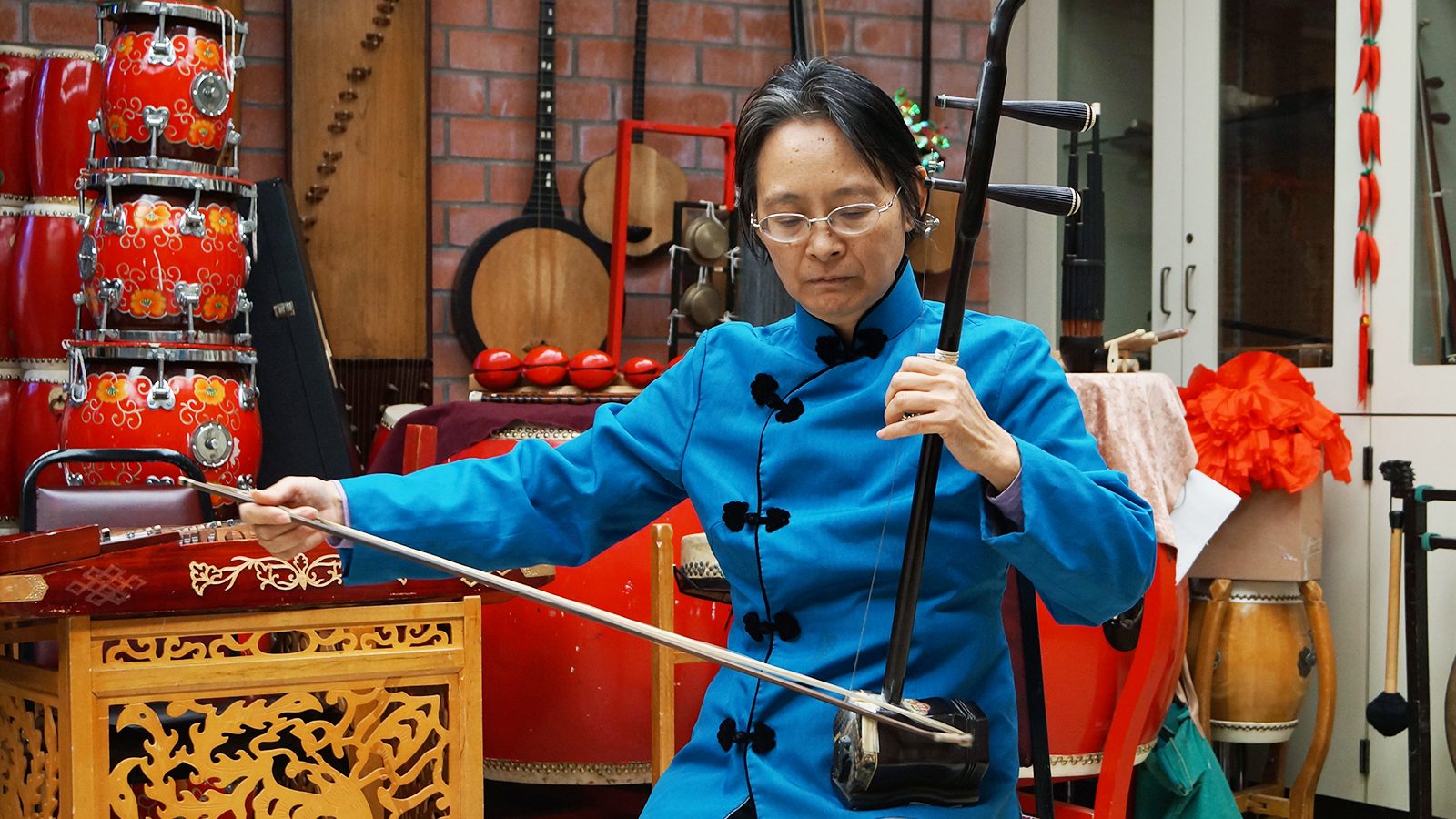
Beginning to play the erhu can feel daunting due to its unique structure and playing style. The erhu consists of a long neck with two strings and a small resonating body covered by python skin.
Although the erhu has a relatively simpler construction than many Western instruments, it allows for an astonishing range of tones and techniques.
Learning to hold the bow correctly, to produce smooth vibrato, and to execute precise finger placements on the strings without the guidance of frets are key components of the erhu skill set.
Careful daily practice is essential to foster these abilities.
Proper maintenance of the instrument is also crucial in achieving a quality sound. This includes regular tuning before playing and ensuring that the python skin, strings, and bow hair are well cared for.
Ensuring the erhu stays in good condition not only aids in producing beautiful music but also prolongs its lifespan, making the journey of learning and creating music with the erhu ever more rewarding.
Key Takeaways
- The erhu is a distinctive Chinese string instrument known for its expressive quality.
- Beginning players of the erhu should focus on mastering finger placement and bowing techniques.
- Regular practice, correct tuning, and careful maintenance are essential for the quality and longevity of the erhu.
Getting Started with the Erhu
When I first began learning the erhu, my focus was on understanding the instrument and getting the basics right. Let me guide you through the initial steps to start your own journey with this beautiful instrument.
Choosing the Right Erhu
Before I play, I need to pick an erhu that suits me. I can either buy or rent one, depending on my commitment level. I look for an erhu with a good tone quality and check that the skin of the body, which greatly affects sound, is intact and without blemishes. Here’s what I consider:
- Body Material: Typically made from hardwood or bamboo, for a richer sound.
- Skin Type: Python skin is traditional, but synthetic options are available too.
- Strings: They should be of good quality, as they directly contribute to the sound produced.
- Price Range: I set a budget that reflects my level of investment in learning to play.
Fundamentals of Holding the Instrument
Holding the erhu correctly is crucial for me. Here’s how I do it:
- Sit up straight or stand comfortably.
- Place the base of the erhu’s body on my upper left thigh.
- Tilt the top slightly away from me, resting it against my chest.
- Make sure the front of the skin faces outward, so it resonates clearly when I play.
Understanding Erhu Parts and Setup
Erhu Anatomy: Familiarizing myself with the erhu parts gives me better control over my performance. Here are the essential parts:
- Bow: Traditionally wedged between the two strings, and I never separate it from them.
- Strings: Two strings, typically tuned to D (inner string) and A (outer string).
- Tuning Pegs: Located at the top, used to tighten or loosen the strings to achieve the correct pitch.
- Bridge: Transfers vibrations from the strings to the body, pivotal for sound production.
- Qianjin: A small loop that I can slide up or down the strings to fine-tune their pitch.
- Skin: It’s the erhu’s soundboard, and I ensure it’s well-maintained for the best sound quality.
By mastering these initial steps, I lay down a solid foundation for my erhu playing journey.
Playing Techniques
In my journey with the erhu, I’ve discovered that precise playing techniques are vital. They define the sound and expression of the music. From the gentle placement of a finger to the firm bowing on strings, every movement matters.
Bowing Skills
Bowing is the heart of the erhu’s voice. I always make sure my bow hair is properly coated with rosin to prevent slippage and ensure a smooth sound.
Mastery of bowing involves controlling bow speed, pressure, and angle. I keep my wrist flexible and maintain a steady flow, like this:
- Speed: Faster for louder tones, slower for softer ones.
- Pressure: More pressure deepens the tone, less pressure makes it lighter.
- Angle: Straight angles produce pure tones; slight angles can introduce a delicate vibrato.
When practicing bowing, I use a sponge or cloth to clean my strings and bow hair, maintaining the quality of sound.
Fingering Methods
The strings of the erhu respond to the lightest touch. I’ve learned exact finger placement is crucial for accurate pitch.
Erhu fingering is unique; instead of pressing strings to a fingerboard, I press them against the open air. Here are the basics:
- Left-hand position: Thumb behind the neck for stability.
- Fingers: Press and slide smoothly along the string for different pitches.
- Practice: Regular scales and arpeggios help develop muscle memory.
Advanced fingering methods, like vibrato, add an emotional depth to the music and require consistent practice to perfect.
Advanced Techniques
As I progressed, I embraced advanced techniques that add complexity to my playing. Techniques such as fast trills, sliding tones, and spiccato require precise bow and finger control. Here’s what I keep in mind:
- Vibrato: A subtle wrist motion for a rich, pulsating sound.
- Trills: Rapid alternation between two close pitches by quick finger movement.
- Spiccato: Light, controlled bouncing of the bow on the strings for staccato effects.
I practice these techniques slowly at first, gradually increasing speed as I become more confident in my control.
Advanced techniques not only enhance musicality but also bring out the erhu’s expressive potential.
Tuning Your Erhu
Before tuning my erhu, I make sure that it’s a calm and quiet environment which helps me concentrate better on the pitch. Getting the tuning right ensures that my erhu will sound harmonious and resonate well with the intended scales.
Preparation for Tuning
I always ensure the erhu is in a stable position before I start tuning. This usually involves sitting down with the erhu’s body resting on my left thigh, and the neck held by my left hand.
In preparation, I also make certain that my tuning device, whether it’s a tuner or a tuning app on my phone, is functioning properly and within reach.
Standard Tuning Process
- Identify the Strings: The erhu has two strings – the outer string (nearest to me) is traditionally the A string, and the inner string is the D string.
- Start with the A String: I tune the outer string to the note A using the tuning peg at the top of the erhu’s neck.
- Tune the D String: Next, I tune the inner string to the note D. This gives me the standard D scale when playing, with an interval of a fifth between the two strings.
Tips on Achieving the Correct Pitch:
- Pluck the string gently and listen to the pitch.
- While the note is still ringing, I adjust the tuning peg slowly to raise or lower the pitch.
- I match the erhu’s pitch with the tuner until the indication is at the center, suggesting the string is in tune.
Remember, delicate adjustments are key. It’s better to make minimal adjustments gradually than to overtune and risk snapping a string.
Maintenance and Care
When I play the erhu, ensuring its longevity and quality of sound is important to me, so I regularly perform maintenance and care. Taking care of my erhu involves a few key practices that keep it in top condition.
Firstly, rosin is essential for my erhu’s bow to produce sound. I apply rosin gently to the bow hair before each session. Too much can create a harsh sound, and too little won’t generate enough friction. I strike a balance, aiming for a smooth, even tone.
The bow hair requires special attention as well. I make sure it’s not too tight or too loose when playing. After each use, I gently release the tension to prevent the hair from stretching. If I notice any fraying or a significant decrease in sound quality, I take my bow to a professional for rehairing.
Cleaning my erhu is a delicate process. I use a soft, dry cloth to wipe down the body and strings to remove any dust or rosin build-up. For more stubborn spots, a slightly damp cloth can help, but I avoid getting the wood too wet to prevent damage.
I also occasionally use a small damper on the bridge to control overtones and achieve a cleaner sound during practice sessions. The damper gently mutes the strings, which can be helpful when I’m focusing on technique.
Storing my erhu properly is crucial. I keep it away from extreme temperatures and humidity to prevent warping or cracking. In its case, I ensure there’s adequate padding and support.
Before putting my erhu away, I check that it’s clean and the strings are at the right tension to avoid any unnecessary strain.
Repertoire and Practice
When learning to play the erhu, it’s vital to have a repertoire that reflects your skill level and to establish a practice routine that promotes consistent progress. Whether you’re a solo performer or aiming to join ensembles, the right repertoire and practice habits are the foundation of your musical journey.
Finding Sheet Music
As I’ve progressed on the erhu, I’ve found that sourcing sheet music can serve as an inspiration for my practice sessions. Here’s what I recommend for finding erhu sheet music:
- Search Online: Online music libraries and forums are often rich resources for erhu scores. Some may offer free erhu lessons and sheet music.
- Purchase from Music Stores: Retailers specializing in Asian instruments often carry erhu sheet music.
- Contact Other Musicians: Sometimes, the best way to acquire unique and traditional pieces is to ask fellow erhu players.
Practice Routines
Creating an efficient practice routine is crucial for skill development. My routine typically includes the following:
- Warm-Up: I start with basic bowing exercises to ensure my technique is on point.
- Technique Practice: Focusing on scales and etudes helps me refine my skills.
- Repertoire Work: I dedicate time to practicing pieces that are challenging and gradually incorporate more complex compositions.
Joining Ensembles
Participating in ensembles has been a highlight of my erhu journey. Here’s how you can join one:
- School Orchestras: If you’re a student, look for opportunities to join school orchestras that welcome traditional instruments like the erhu.
- Local Community Ensembles: Many communities have ensembles that appreciate the inclusion of diverse instruments.
- Create Small Ensembles: Don’t hesitate to form your own small ensemble with fellow musicians interested in exploring the versatility of the erhu.
Frequently Asked Questions
In this section, I’ll answer some common questions about starting to play the erhu, finding resources, and understanding its significance.
What are the basic steps for beginners to learn the erhu?
Where can I find video tutorials for learning the erhu?
Can you recommend any good resources or PDFs for studying erhu playing techniques?
Are there instructors available for personalized erhu lessons?
How does the difficulty of learning the erhu compare to that of the violin?
What is the historical significance of the erhu in music?
Author Profile
-
Daniel Johnstone is an English writer with a love for stringed instruments from around the world.
He shares his love for these instruments through his writing for folkstrings.com, a website dedicated to all things related to folk string music.
Daniel's passion for music started at a young age, and he has since become an accomplished musician, playing guitar, cavaco, and recently, the harp.
His dedication to learning and sharing his knowledge of stringed instruments is evident in his insightful and engaging blog posts. Whether you're a seasoned musician or a beginner, Daniel's writing is sure to inspire and entertain you.
When he's not playing music or writing, you can find Daniel exploring new instruments and seeking out new sounds to share with his readers.
Latest entries
 AutoharpApril 4, 2024Is Autoharp Easy to Play? Unveiling the Truth for Beginners
AutoharpApril 4, 2024Is Autoharp Easy to Play? Unveiling the Truth for Beginners AutoharpApril 4, 2024What Is an Autoharp Worth? Your Guide to Pricing and Value
AutoharpApril 4, 2024What Is an Autoharp Worth? Your Guide to Pricing and Value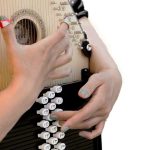 AutoharpApril 4, 2024Where Is the Best Place to Buy an Autoharp? Your Top Picks Reviewed
AutoharpApril 4, 2024Where Is the Best Place to Buy an Autoharp? Your Top Picks Reviewed AutoharpApril 4, 2024How Does the Autoharp Work? – Unveiling Its Melodic Secrets
AutoharpApril 4, 2024How Does the Autoharp Work? – Unveiling Its Melodic Secrets

